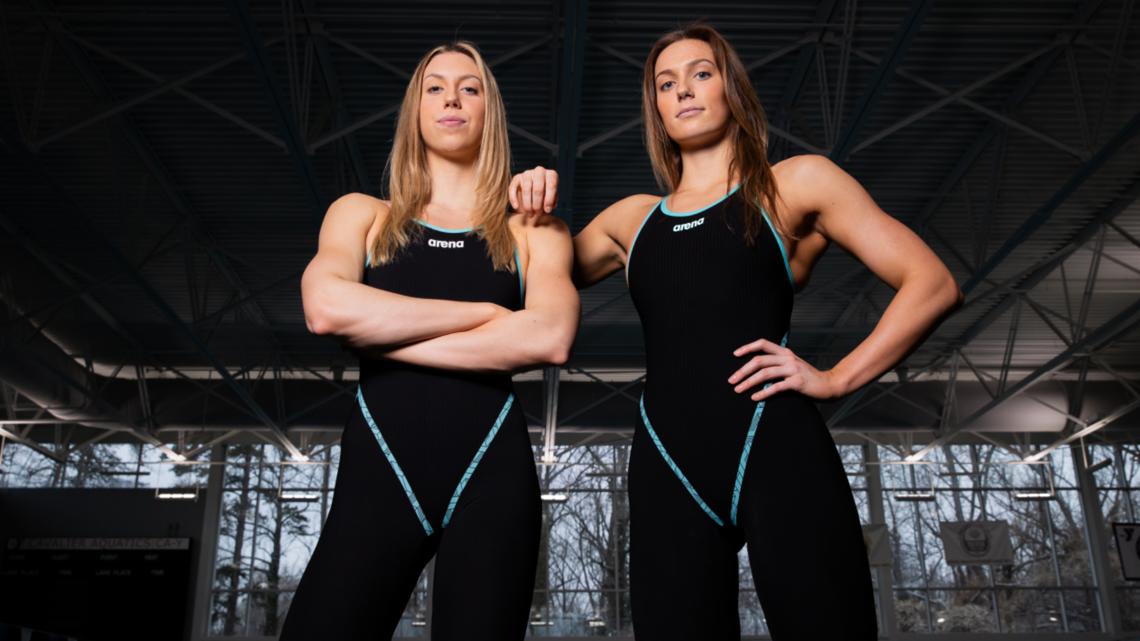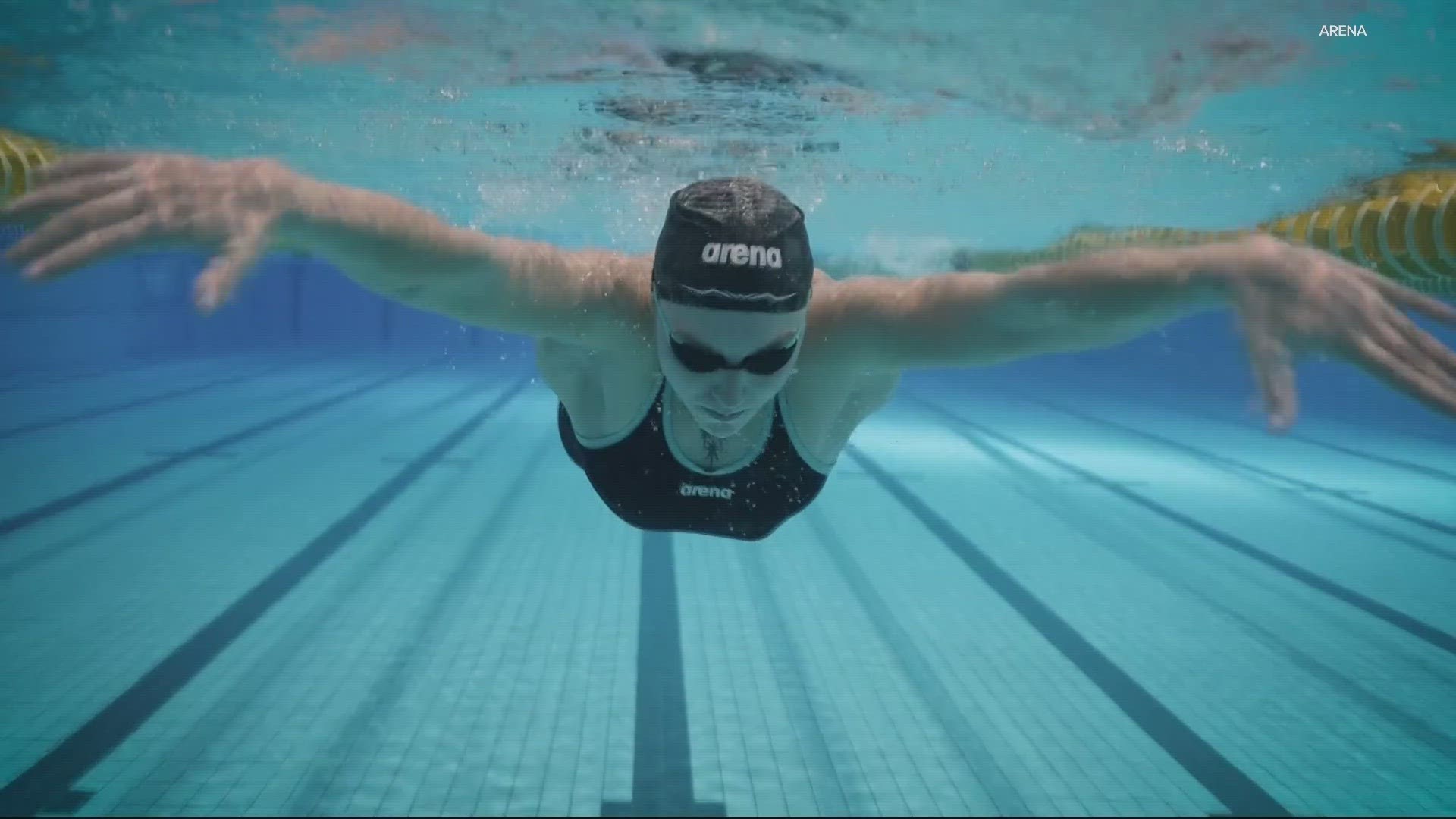PORTLAND, Ore. — With about four months to go before this year's Summer Olympics in Paris, a Portland-based swimwear company hopes its new design will be on the big stage and bring home the gold.
Arena, an Italian swimwear company, with its U.S. headquarters in the Pearl District, claims its new suit solves a big problem for competitive swimmers, and it has to do with just putting it on.
Arena was born after Mark Spitz won seven gold medals at the 1972 Munich Olympics. Horst Dassler, the son of the founder of Adidas, saw huge potential in the sport, and a year later, created Arena.


The brand made its Olympic debut three years later at the 1976 Montreal Games.
"We've always been connected to competition," said Mark Pinger, general manager for Arena USA. "Actually, in the U.S., we are more focused on competition."
Today, Arena's lineup of products includes everything from equipment, goggles, training tools and swimwear, both competitive and recreational. Pinger said 80% of the company's competitive swimming business is in the United States.
Fifty years after its founding, the company remains a top brand for swimmers and just introduced its new line for men and women called Primo, which means first in Italian.


"We had four years of development. We had 89 different prototypes over the course of those four years. We tested it with 600 athletes before the launch," Pinger said.
Arena said the new suit tackles a common problem for swimmers. It can take anywhere from 15 to 20 minutes for a swimmer to put on a high-tech swimsuit. Arena said Primo cuts that time down significantly.
"You can put this on in a matter of minutes; whereas before, you had to make time in your agenda during the swim meet and say, 'Where's the 25 minutes where I put my swimsuit on?'" Pinger said.
Primo uses a fabric called tensoelastic, giving the swimsuit a more elastic feel when putting it on, while keeping that needed compression.
"The big tradeoff in these race suits is that swimmers are looking for compression, but they also when they are in the water, they want to make sure they have a full range of motion," Pinger said.
He compared it to a rubber band snapping back into shape after being stretched out.
"It doesn't press as hard on the shoulders," Pinger said. "It's not uncomfortable. You feel like you can move around, but you feel, get that compression on the muscles that everyone's looking for."
At a price of $450 for a men's suit and $650 for a women's suit, Arena knows it doesn't come cheap.


Pinger said it also lasts longer than other suits on the market.
"For parents and for swimmers, it's tough. No one buys as many suits today as they would like to. They would like to have a new suit every time they have a meet, but with this suit, you don't need that," he said. "With this suit, you can still have a great performance, even if you've had it already for a while."
The U.S. Olympic Swimming Trials are in June, so it remains to be seen if this suit will appear on an athlete in the Olympics, but Pinger said, "Now's really the time between now and the Olympics when people can start to wear the suit, get comfortable in the water, get comfortable in competition, swim a fast time, have that in their mind that they say, 'I swam a really fast time in that suit; that suit is great.'"

